Australian Tropical Rainforest Plants - Online edition
Wetria australiensis P.I.Forst.

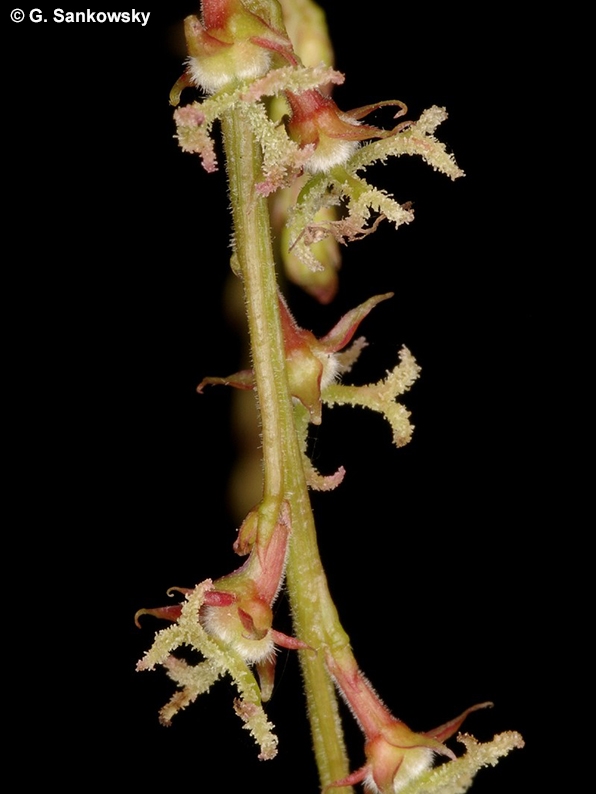
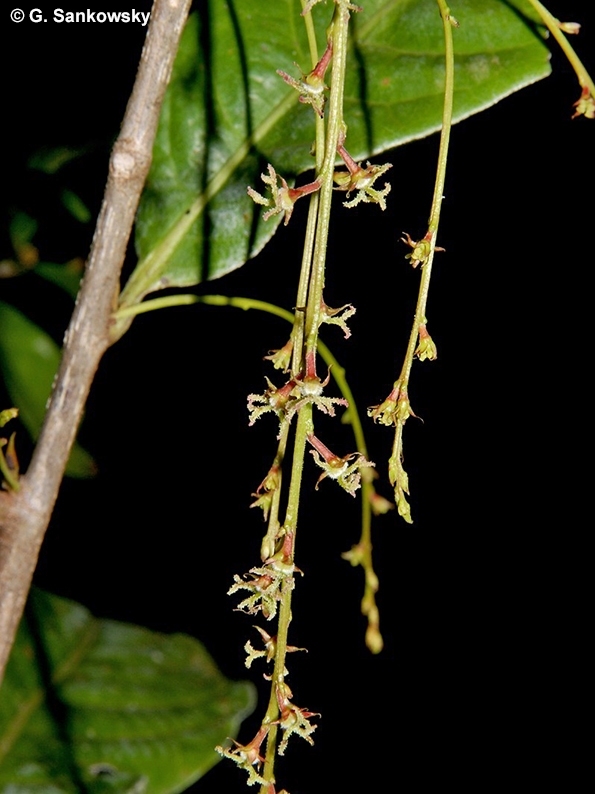
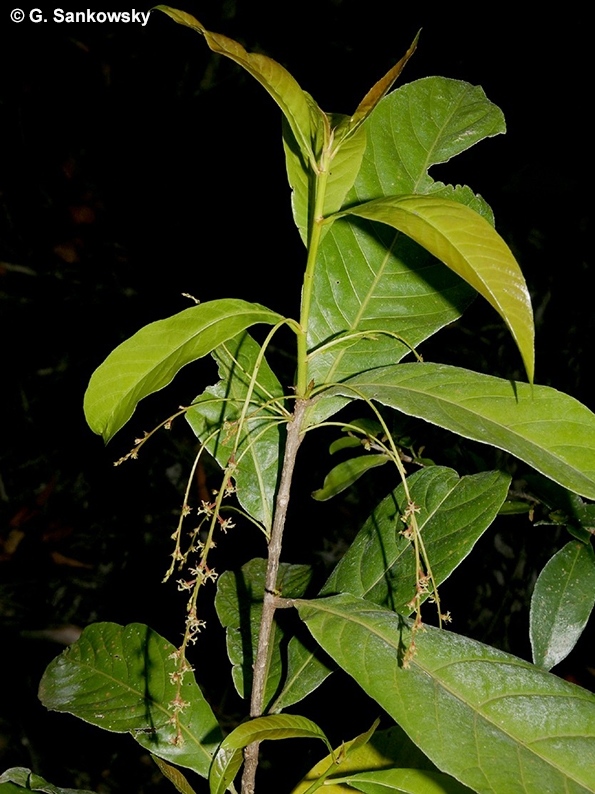

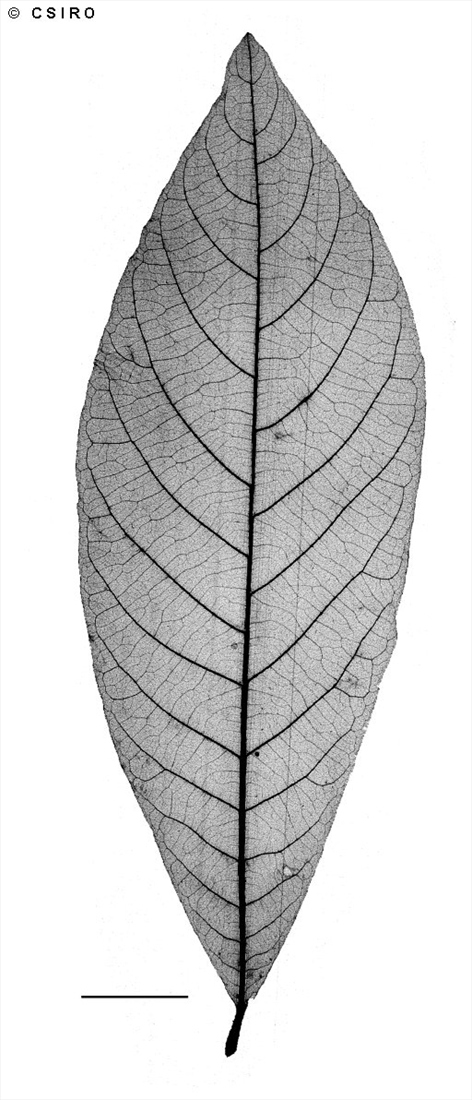
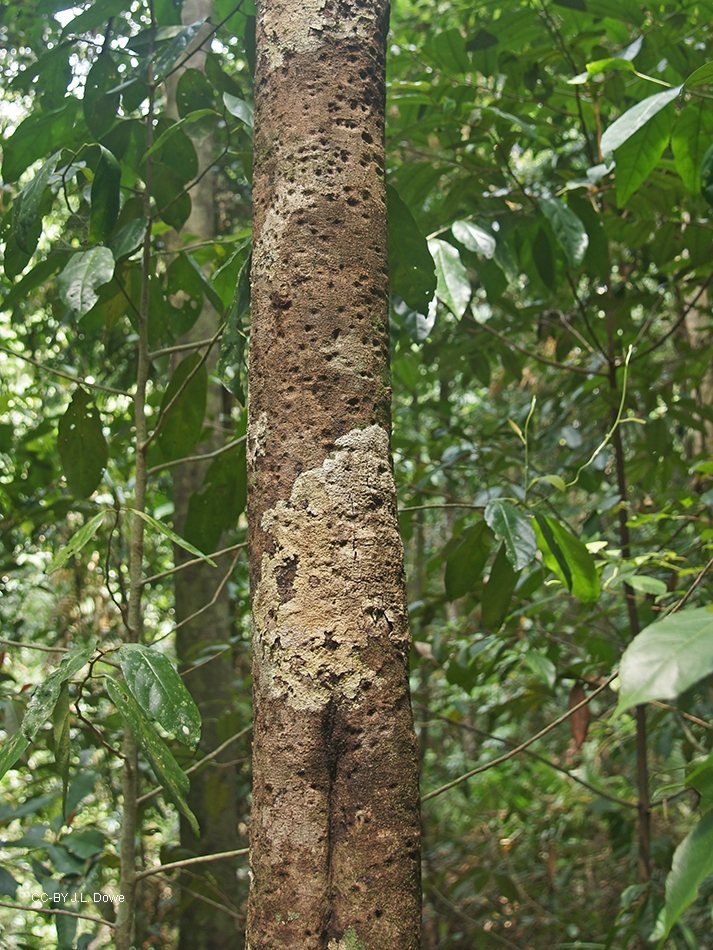
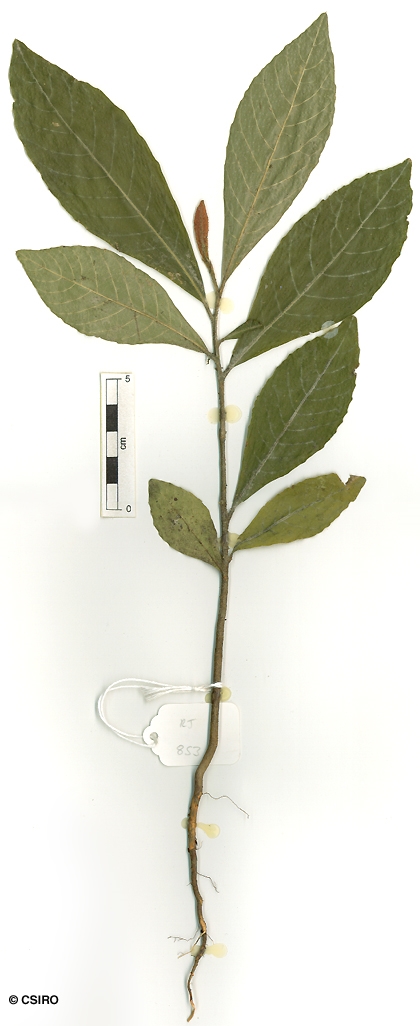
Forster, P.I. (1994) Austrobaileya 4: 141. Type: Queensland. Cook District: Cairns, Currunda Creek, 15 December 1991, C. Lyons 105 (holo: BRI).
Usually grows into a small tree but also flowers and fruits as a shrub.
Leaf blades about 10-20 x 4-8 cm, petioles 0.4-1 cm long. Lateral veins about 11-17 on each side of the midrib. Stipules linear-lanceolate, about 1.1 x 0.2 cm.
Male flowers: Inflorescence up to 15 cm long, a spike of clusters, each cluster consisting of 2-3 flowers. Tepals ovate, about 2 x 2 mm. Stamens about 24. Filaments free, glabrous, about 0.5-2 mm long. Anthers globose, about 1 x 1 mm. Female flowers: Inflorescence up to 30 cm long, flowers about 4.5 mm diam. on pedicels 2-3.5 mm long. Tepals about 2-4 x 0.5-1 mm. Ovary globular, about 1 mm diam., densely hairy, styles three, each about 3 mm long, bifid for 1.5 mm at the apex.
Cotyledons stage and first leaf stage features not available. At the tenth leaf stage: leaf blade obovate, margin crenate, petiole quite short but rather thick. Stipules triangular, about 5-6 x 1.5-2 mm, hairy.
Occurs in NEQ. Known only from a few collections made in the Cairns region but also occurs in New Guinea. Altitudinal range not known but thought to be small, from near sea level to 100 m. Grows as an understory plant in seasonal lowland rain forest.





